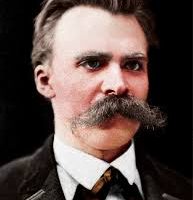The answer to this question would become obvious after I relate the following experience details of which will appear subsequently.
The guidebook that I wrote about was a telephone directory published at the beginning of the 1950s i.e., over 60 years ago. I got a copy of the guidebook by chance and found out that its conclusion would be of interest to another guidebook readers and publisher whose publication disappeared with the death of the publisher who launched, I guess, the first guidebook on Addis Ababa with the title “Addis Guide”.
His name was Habtemichael Woldemariam and he worked as the editor -in-chief with his daughter, Meseret, as his deputy. The production was carried out by Debrework Mengiste, and I was a contributor along with others.
The conclusion of the telephone guidebook reads as follows: “Instructions to subscribers had been included in the telephone directory regarding the use of telephones. ‘The called subscriber should, when answering, state his name or number saying ‘Hello’ or ‘Yes’. The subscriber should speak directly into the microphone quietly and not too loud.”
The instruction shows that the users of the telephone apparatus were just getting used to it and that they needed advice to use it properly. At that time there were only one hundred fifty telephone apparatus for the city of Addis Ababa. By contrast, when the last telephone guide was published, there were no less than 500,000 customers.
Although it is difficult to quote statistics, the growth of the mobile phone was so rapid that it spread throughout the country in no time. If someone is to write a guidebook on the mobile phone, taking account of the acceleration of its growth would be a very difficult task. The book would lag far behind the change that is taking place both quantitatively and qualitatively. Most of the facts that will be quoted would become history.
The statement I made with reference to the telephone directory was: “Just as newspapers could be regarded as preliminary source of historical facts, the same thing can be said of telephone directories.” This is based on the assumption that telephone directories are the same as guidebooks.
However, there are different kinds of guidebooks and some of them have nothing to do with history. For example, a handbook prepared for technicians may be considered as a guidebook just like a stylebook which is prepared to serve editors deal with writing problems prior to the publication of a book or a newspaper. In this connection, both newspapers and books could bring to the forefront the issue of timeliness which is a measuring rod as to whether a book or a newspaper is worth reading.
By its very nature news is timely and a newspaper cannot but meet this essential requirement. The exception is that current affairs are generally treated with background information. On the other hand, a book can be written with the purpose of dealing with background information on a specific subject.
Nevertheless, the process of writing the book may take one or two years not to mention the period of its printing and publication. Hence, whereas it is comparatively easy to update a newspaper on a daily or a weekly basis, it is difficult to do the same with a book.
A book cannot be edited indefinitely and it is possible for the author to add new facts and information by using subsequent editions if that is worth the time and effort spent on the book or the demand for it far exceeds its supply. In this regard, it is not unusual especially in a very popular textbook to see a tenth or eleventh edition.
As a matter of necessity, it is appropriate to see when and where a book is published. For example, if the book had been published before 1960, it would be difficult to imagine that its contents would focus on the Internet.
Unlike the computer, the office machine that was often in use was the typewriter. Today, it is obsolete.
Still, there are individuals who regard the typewriter as an ideal machine invented to suit all occasions. This is so especially when someone considers the constraints posed by power failure. Typing speed was looked after just as running speed. It was not unusual for the best typist to exceed 100 words a minute. Perhaps, this is too low an estimate, and it is possible that I had forgotten the exact fact.
Moreover, teaching typewriting was a flourishing business just as operating a special software or program in the present day world. They do not exist in Addis Ababa any more. Following such training, it was easy to be employed in any office, private or public. The training took one or two months at the most.
The best novels were written on typewriters. So were guidebooks, newspapers, notices and advertisements. Then one invention followed another with rapid modifications occurring on the typewriter itself. Portable typewriters appeared and some were transformed to use electric power. Step by step, the typewriter was changed into a computer. If the typewriter could change so much, why not the guidebook on which it was written?
To conclude, this is the way a particular hotel was advertised, “…conveniently situated in the center of the town within a few minutes from the Banks, all travel agencies, cinemas, and, most important, business firms… French and international cuisines – Modern American Bar – Running water in every room – restaurants open up to noon -Dance every Saturday – Tennis (two courts) -Ping-Pong tables – Hair-dressing saloon -Beauty Parlour – [and] a motor-car workshop.” The name of the hotel has not been mentioned.
The Ethiopian Herald Sunday Edition 18 August 2019
BY BERHANU TIBEBU ZEWOLDE







